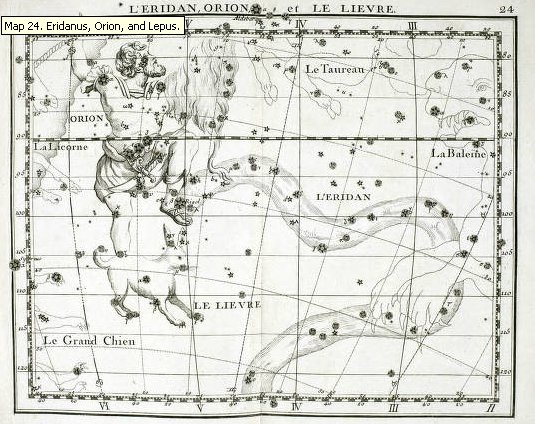2. We can correlate this triplet of stars with Gb8-15, Gb8-22, and Gb8-26:
Zaurak is not far from right ascension 04h and the upraised hands which are reversed compared to those in Botein (12 days earlier) ought to have some meaning. The head is now turned forward and the glyph type is basically hanau (birth). The head of the bird is not radically distorted as those in the surrounding glyphs. The neck is straight in front but curved at the back. The foot in front has toes, but the foot at the back is without and closed. 68 days beyond day number 400 something new is arriving. 82 * 6 = 492 (= 192 + 300) = 4 * 123. Zaurak marks a low point in the river:
"Zaurac and Zaurak are from the Arabic Al Nā'ir al Zaurak, the Bright Star of the Boat; but Ideler applied this early designation to the star that now is α of our Phoenix ... " (Allen)
"Alpha Phoenicis (α Phe, α Phoenicis) is the brightest star in the constellation Phoenix. It has the traditional name Ankaa, from the Arabic ... al-‘anqā’ 'the phoenix'. Medieval Arab astronomers formed the constellation of the dhow (small boat) where Phoenix is, so another popular name for the star is Nair al-Zaurak from ... al-na’ir az-zawraq 'the bright (star) of the skiff'. The Latin translation is Cymbae, from lūcida cumbæ ..." (Wikipedia) So Zaurak means a kind of boat. It makes sense to go by boat on a river. Perhaps the left leg of the bird sitting low in Gb8-26 is meant to represent the hull of a ship? Maybe the ship has reached the shore of a new land:
The page numbers in Manuscript E (17, 18) suggest Venus and Saturn, and the arrival of the canoe of the explorers could be higher up in the sky, why not at Algenib (α Persei)? Its position is day number 459 and from there to Rana there are 5 days. Day number 464 = 364 + 100 and 464 can be read as 46 * 4 = 184. |
|||||||||||||||||||||||||||||||||||||||||||||||||||||||||||||||||||||||||||||||||||||||||








